A historical walk through some of the greatest recordings of all time, and how you can recreate them today
By Paul J. Stamler
In this article, I’m going to look at drum sounds from the hundred-year-plus history of music recording. I’ll examine some classics which set the aural standard for how we hear recorded drums. It’ll be a selective list; it will include only what I know (obviously) and what I could find information about from printed sources, album notes and photos, and of course the Internet. That’s perilous, since the information out there is often contradictory and sometimes just completely wrong.
“The trouble with quotes on the Internet is that it’s difficult to determine whether or not they are genuine.”—Abraham Lincoln
Learn from the classics
Can we use these historical approaches to improve the drum sounds on our own recordings?There are limitations. Drum recordings begin with the drummer, and not a lot of people can play with the syncopated lilt of Zutty Singleton, the raw power of John Bonham, the soulful elegance of Ringo Starr, the inspired simplicity of Levon Helm, or the pure funk of Al Jackson, Jr.
Great drum recordings also have a lot to do with the room, and most of us don’t get to record in Abbey Road Studio Two, or in Rudy Van Gelder’s room in New Jersey, or in an English mansion built in 1795, or in the converted theater that housed the Stax studio.
Nevertheless, it’s worth learning how some classic drum sounds were achieved, because we can apply the ideas to our own recordings. Perhaps we can get out of a “condensers overhead/421s on toms/57 on snare/D112 on kick” stereotypical rut and develop some new possibilities and—who knows—perhaps develop some new classic sounds. As we go along I’ll give a few suggestions about ways to approach some of these older methods of drum recording in a modern home studio. So let’s begin—by going way back.
What’s the Problem?
Drums have been the foundation of popular music ever since the modern trap kit was developed in the 1910s. Recording them has always been a challenge, since drums have:
~ a broad frequency range that can cover almost the entire audible spectrum;
~ wide dynamic range, from the quiet tizz of the hi-hat to the power of the kick and snare, not to mention a good spine-tingling cymbal crash;
~ sharp attack transients, and low-frequency hits which, in the vinyl days, could make a tonearm fly off the record if improperly recorded and cut.
The 1920s—Zutty Singleton
How did they mike drums on the classic jazz recordings of the 1920s that first set the pace for the use of drums in popular music? The answer is simple: they didn’t.
In the earliest days of recording, there were usually no drums; the acoustical recording process couldn’t record them successfully, so the producers would have the drum parts played on wood blocks and triangles, just as they’d have bass and cello parts played on tubas and bassoons.
When electrical recording was invented, however, the drums could return to their rightful place in the band, but without their own mics. Most recordings in the early electrical period were made using a single microphone, in the same way as classical recordings are often made today. They were, in effect, miking the room and the music within it, rather than individual instruments or sections; often there were no facilities for blending multiple microphones together.
So they used one mic, carefully placed. It was typically a Western Electric condenser mic, omnidirectional, with a flat bass and midrange response rising to a low, broad peak around 16 kHz; the cutting heads generally gave up around 8 kHz. (Some small labels used carbon microphones, also omnis. I have no information about what their frequency responses might have been, but they were probably poor.)
Balance was set by positioning the musicians and the mic in the room; the drums were typically set on a riser at the rear of the group. If the producer wanted the drums more prominent in the mix, he’d tell the drummer to play harder.
This was, and is, a remarkably effective recording technique—if the engineer knows how to place the single mic (or, these days, a stereo pair using one of the standard single-point stereo techniques such as ORTF, XY or M/S), and if the musicians know how to play together and balance themselves.
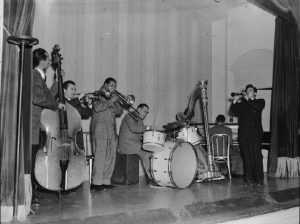
Tommy Potter, Max Kaminsky, Benny Morton, Zutty Singleton, Adele Girard, Teddy Wilson, and Joe Marsala, National Press Club, Washington, D.C., ca. 1939. Photo William P. Gottlieb, Library of Congress.
1940s—The Big Bands
Jump forward to the time just after World War II, when the Big Band was still dominant in popular music (though other styles were beginning to pop out of the woodwork, like jump blues and western swing). We have the gift of an interview with the late Bill Putnam, whose Universal Audio studio in Chicago (and later studios on the West Coast) helped create modern recording and music. (He also designed pioneering gear like the LA-2A and 1176 compressors.) In a 1989 interview published in the Journal of the Audio Engineering Society he talks about recording a Big Band, Guy Lombardo & his Orchestra, in 1946.
By this time multi-miking was routine in popular recording. Putnam’s studios had the capacity for combining up to 12 mics, and for a Big Band recording he’d mike individual sections—but still not drums. In the interview, he discusses miking a brass section (4 players), with the drums right behind the brass players and picked up on their microphone.
That mic was an RCA 44BX ribbon; these were bidirectional, and, operated into the mic preamps of the day, they had a flat frequency response up to about 12 kHz, above which they rolled off. Those mic preamps had fairly high input impedances, which suit classic ribbons well; a discussion of how loading affects ribbon mics is a bit beyond the scope of this article.
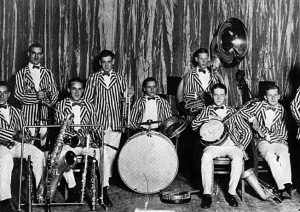
Guy Lombardo and the Royal Canadians in Port Stanley, London, Ontario before leaving for Cleveland. Photo courtesy free-classic-music.com
1950s—Rudy Van Gelder’s Jazz
Beginning in the early 1950s, Rudy Van Gelder made some of the finest jazz recordings in history. It was a fertile time in modern jazz; after the Bebop explosion of the 1940s, the music brought forth some of its greatest players in a myriad of styles (hard bop, post-bop, cool, third stream, etc). They recorded for small labels like Blue Note, Prestige and Savoy, and created exciting and challenging music. A lot of those small labels hired Rudy Van Gelder to engineer their records.
Van Gelder began recording in his parents’ home in Hackensack, NJ when he was a teenager; when he reached adulthood he built a larger studio with similarly excellent acoustics in Englewood Cliffs, NJ. Right up until the day he died, Rudy was notoriously close-mouthed about his techniques, refusing to discuss mic choice and placement or allow photographs to be taken during sessions he engineered.
In the absence of information from the source, we have to listen. (Radical concept!) My ears suggest to me that Van Gelder has always miked drums using a single overhead condenser mic, probably a large-diaphragm Neumann U 47 or, perhaps, a small-diaphragm KM 54. I don’t hear a separate mic on the kick; the coherence of the sound suggests the use of a single microphone for the drumkit.
The drums aren’t entirely recorded with that one mic, though; one of the hallmarks of a Van Gelder session is lots of leakage—drums into the horn mics, horns in the drum mic. Never enough to create phase problems and comb filtering, but enough to create the marvelous sense of space that marks his recordings—yes, even the early ones in mono. You don’t think a mono recording can have a sense of space? Listen to one made by Van Gelder.
So what was his secret? My own feeling is that the secret of Rudy Van Gelder’s recordings is Rudy Van Gelder. He knew how he wanted the recording to sound, and he knew the room and his gear so well (after decades of use) that he could place the musicians and mics in just the right places, with carefully controlled leakage, to get the sound he heard in his head. And that goes double for drums.
Could you get that sound? You’re not Rudy Van Gelder, and you probably don’t have a U 47 available (neither do I), but several currently-available Microtech Gefell mics use the same M7 capsule, and the more expensive ones have tubed U 47-style electronics. If you have a large, high-ceilinged room with really good acoustics, and you know those acoustics intimately from years of working there, give it a try. Move instruments and people around as needed; make sure there’s no comb filtering, then start the recorder and the musicians. You’ll wind up with your sound, not his—but it could sound exquisite.
1950s—2120 S. Michigan Ave.
If you’re a fan of Chicago blues or early rock’n’roll you know that address; it housed the South Side offices and studios of Chess Records, where some of the most influential recordings in history were made. From Muddy Waters and Little Walter to Chuck Berry, the great musicians who came up from the Mississippi Delta to create a new, hard, urban sound (and the youngster from St. Louis who blended in a touch of country music) made great records in a long, narrow room shaped more like a hallway than a traditional recording studio. (A few of Chess’s records were made at Bill Putnam’s place, but the majority were recorded in-house.)
How did they mic the drums? This is one of those times where Abe Lincoln’s quote applies: it depends who you believe. One source says Chess Records owned nothing but Electro-Voice mics, which they got in a special deal from E-V. Another source says they also had RCA ribbons and a Telefunken mic (presumably a U 47—Neumann made U 47s to be sold under the Telefunken badge in early postwar years). Whom do you trust?
Your ears, of course. Listening to early-1950s Chess recordings, mostly produced by Willie Dixon, I hear the characteristic sounds of a drumkit recorded with a single microphone, and it sounds very much like an E-V dynamic. (Probably a 664 or 666.) Was it over the drums? Perhaps, but it could equally be in front of the kit, perhaps pointing at the rim of the snare from a few feet away.
In any case, the sound is very plain; no multiple mics on the toms or the cymbals, and no mic (usually) on the kick. The drums are mixed toward the back rather than up front; in many of these recordings, the voice, bass and Little Walter’s harmonica carry the rhythm. On “I Just Want to Make Love to You”, I hear a different setup—I’m pretty sure there’s a mic on the kick as well as the main mic on the drumkit. It still sounds like an E-V dynamic, and the drums are still mixed low; they’re actually below the level of Dixon’s string bass, so the kick melds with the sound of the bass into a deep, throbbing beat.
Could you do this? E-V 664s are fairly common and cheap on Ebay, although they probably won’t sound like they did in 1952. (The diaphragms and their suspensions age and stiffen, causing the mics’ sound to change.) It’s worth a try, though, if you want a really plain and funky sound. Don’t let the mic get too close, and don’t use any reverb. There was an echo chamber at Chess, and they used it, but mostly on vocals and melody instruments; I never hear it on drums.
 1958—Peggy Sue
1958—Peggy Sue
The recordings of Buddy Holly were renowned in their own time as some of the best-sounding records available; Holly himself had high standards, as did his producer Norman Petty. And they could sound weird sometimes.
Perhaps the classic example was “Peggy Sue”. The drums were miked in the standard Norman Petty arrangement: a Telefunken U 47 overhead, an RCA ribbon on the kick, and an Electro-Voice RE15 on the snare, a dynamic mic with a remarkably flat frequency response on- and off-axis, and very little proximity effect. What made it weird was the echo chamber; the track had heavy echo on it, and Petty switched the feed from the chamber on and off in time with the beat. He also rode the fader heavily, again with the beat, producing a bizarre, pulsating sound that complemented Holly’s stuttering vocal perfectly.
You could do this if you wanted to—but it would have to be on exactly the right song.
1960s—Soul Men
We know something about the great soul recordings made by the Memphis label Stax, using their house band (known on their own as Booker T. and the MGs). In fact, we know several things; unfortunately, they contradict each other.
What we’re sure about is that the Stax studio was in a converted theater, with the control room on what had been the stage and ceilings some 15–20 feet high. The drums and drummer sat on a platform jutting out from a side wall; one source suggests the drum area was well-isolated from the rest of the room, while others say it was open. In either case, I hear less leakage of the drums into other instruments on Stax records from the mid-Sixties than I do on other recordings from the same time.
A seemingly-knowledgeable source adds details. The drums were tuned lower than usual for that characteristically deep soul-drum sound, and the drummer—Al Jackson, Jr.—kept his wallet on top of the snare drum. When he hit the snare, the wallet would jump into the air as the head rebounded, then land back on the head a fraction of a second later. This did two things: it produced another sound closely following the original snare hit, and it muffled the head’s further vibrations.
How did they mike the drumkit? One story is that they put an RCA ribbon (probably a 77 series) under the hi-hat, perhaps pointed at the rim of the snare, with a second ribbon mic on the kick. Another, talking about later years, describes a limited multi-miking setup: a condenser mic overhead (perhaps a Neumann U 67, or in later years a U 87), an Electro-Voice RE20 on the kick, and a Neumann KM 84 5–8” away from the bottom of the snare drum. This informant suggests that sometimes an RE15 or a Shure 545 (precursor to the SM57) would be used on kick or snare.
Another story (from Motown’s Bob Ohlsson) says that in 1968 Stax would record drums with a Shure SM57 equidistant from the snare, rack tom and hi-hat, placed partway down the side of the snare. The kick was miked with an RE15, and if there was a second rack tom or a floor tom that would get an additional (unspecified) mic.
All mics were recorded to a single track; they didn’t use much external compression, but they would push the levels on tape pretty hard to get compression from tape saturation. Ohlsson adds some piquant details: the front head was always removed from the kick drum, and Stax did its mixing on a pair of speakers salvaged from an old Seeburg juke box.
Sandbagging at Capitol Records
While I was finishing this article, AEA’s Wes Dooley offered the following: “Your mention of drum recording reminded me of the Capitol Records standard setup for bass drum recording. From the 1940s into the 1970s, their standard bass drum mic for popular music sessions was to use an RCA 44BX. The front skin was removed, and a 25-pound sandbag was put inside, with a towel on top. The 44BX was then laid on top of the towel, so it was horizontal and at right angles to the beater and skin. They still have a dozen 44s in the mic locker. Capitol had their standard way of doing things.”
 1960s—I Second That Emotion
1960s—I Second That Emotion
How did they do drums at Motown? Rather surprisingly, we know little about their practices in the early years, because Bob Ohlsson, who has written and talked at length about Motown’s recording practices, only worked there in later years, not in the early 1960s when the label’s reputation was being made. We know that the instrumentalists recorded in a relatively small room in what had been Berry Gordy’s basement. They recorded the instruments all at once; the lead vocals would be overdubbed later. That’s one of the reasons the band was so incredibly tight—the other reasons were great talent and playing together every day for years on end.
Oh, and one reason for the highly-damped sound of the kick drums on Motown records is that the kick was half-filled with torn-up newspaper.
Ohlsson suggests that in the early years the drums were cut with a single overhead and fill mics on kick and snare, again bused to a single track on the eight-track recorder Motown owned (one of the first in the industry). In later years the mics would have been Neumann KM 86s, because in those years everything at Motown was recorded with KM 86s; they bought a couple dozen of them and used them on everything—instruments, vocals, the works. They donated the mics they’d previously used to local educational institutions. I’m not sure I’d want to do everything in a studio with the same mics, but in the later years of Motown, that’s what was goin’ on.
Filling in some holes in my information from Bob Ohlsson, AEA’s Wes Dooley says, “Motown also had their standard way of doing things. The early Motown drum approach was one mic on the kick and another mic overhead. Later when they owned more microphones, they added a snare drum mic into the mix. Motown’s mic locker in 1961 and 1962 was two Sony C37As, two U 47s, two RCA 77DX, two Electro-Voice 666. When they had their first hits, they bought six Neumann U 67s, and then later another ten U 67s. In 1966 or 67 they bought Shure SM57s which they tried on everyone.” This information comes via John Windt, who helped set up the Motown studios in the first place.
1960s – Ringo
Thanks to Kevin Ryan and Brian Kehew’s monumental tome Recording the Beatles (“That’s not a coffee table book; that’s a coffee table”) plus memoirs by Geoff Emerick and George Martin, we know more about how Ringo Starr’s drums were recorded than most of us know about our grandparents.
Ringo used a basic seven-piece kit, like most drummers at the time; the extra toms and cymbals in rock drumkits wouldn’t show up until the late ’60s. Like Al Jackson, Jr., Ringo kept his wallet on the snare drum; in later years, he would also spread thin tea towels over the snare and toms, slightly softening the impact and increasing the damping, and he typically kept a woolen sweater in his kick drum. In Abbey Road’s Studio Two his drums were set in an open-fronted booth; this provided partial isolation rather than total. Studio Two was (and is) a fairly large room with high ceilings and excellent acoustics.
The recording techniques, in the beginning, were pretty basic. Typically, engineer Norman Smith used a single overhead mic, positioned low over the drum kit (about even with Ringo’s eyes) along with a mic on the kick, and on the earliest records these were both ribbon microphones—an STC 4038 overhead, while the kick got an STC 4033 (more or less a clone of the Altec 639A, originally developed by Western Electric). Since ribbon mics are fragile and their ribbons are easy to damage with blasts of air (the kind kick drums make), the 4033 was positioned well off-center, at about 1:00 on the kickdrum, toward the edge. Smith (and later Emerick) typically added top-boost EQ to the drum mics while recording, and the drums were almost always compressed on the way to tape.
While the STC ribbon mics sounded good, Smith may have decided they were too fragile to risk on drums; for the Beatles’ 1964 recordings he changed the overhead mic to an AKG D19c, and the kick mic to an AKG D20. These were both dynamic microphones, and more rugged than the ribbons (though Bryan and Kehew note that the D20s still had to be sent out frequently for repairs).
The D19c was an unusual microphone; it was inexpensive, and AKG seems to have considered it a “utility” mic, to be pulled off the shelf for just about any non-critical purpose.(The parallel with how an SM57 is often used in the USA is obvious.) It had a series of ports along the side that made it look like an RE15, and it shared the RE15’s lack of proximity effect. But while the RE15 has extremely flat response on- and off- axis, the D19c was decidedly bright, with a broad on-axis +6 dB peak centered around 5 kHz and another, narrower peak at 12 kHz. Low frequencies rolled off below 70 Hz. I haven’t been able to find a reliable response curve for the D20, but Recording the Beatles describes its bass response as flat, with switchable rolloff curves.
Norman Smith used this basic 2-mic setup for the remainder of his time with the Beatles, through the Rubber Soul era. When Geoff Emerick took over at the beginning of recording Revolver, he kept Smith’s basic setup, eventually adding a Neumann KM 56 small-diaphragm condenser mic under the snare (with a pad to avoid overloading the preamp).
By the time Sgt. Pepper marched into the Abbey Road studio, Emerick was well on the way to full multi-miking on the drums. For that album he added more D19c mics over the floor tom and under the rack tom. But for the single “All You Need Is Love”, recorded after Sgt. Pepper’s release, he went back to the original Norman Smith setup, a D19c overhead (still at Ringo’s head height) and a D20 on the kick, now positioned at about 12:00 o’clock, halfway out from the center of the skin. (In those days kick drums typically lacked the vent hole that’s common today.)
The last years of the Beatles’ recording career featured full multi-miking on the drums, including occasional use of a Sony C38A condenser as an overhead or kick drum mic. On the Let It Be album (not recorded at Abbey Road) Glyn Johns used U 67s overhead, a D20 or D12 on the kick (with the front skin removed), a U 67 over the floor tom, and a KM 56 over the snare. The drums sound noticeably different on this album from their sound on the Abbey Road recordings, as one would expect, but Ringo still sounds like Ringo; it’s still the musician that makes the most difference.
Is there any way you might begin to recreate the Abbey Road drum sound? Well, you’re not at Abbey Road (I assume), but if you have access to a large recording room with live, warm acoustics (perhaps a medium-sized frame church?), you might try the Norman Smith setup.
You can’t buy the mics easily; when I went looking online, the Beatles association had pushed the price of a D20 up to $800, and since dynamic mics change with age there’s no guarantee you’d get one that sounds similar to the mics on Ringo’s kit. For the overhead, probably your best bet would be a Sennheiser MD 421 (the Mark I model, not the Mark II) or perhaps an E-V RE16 (a slightly brighter version of the RE15, still in production). You might also try an SM57, preferably operated into a load impedance of 500 ohms or so. For the kick, I’d suggest an E-V RE20.
Remember to place the overhead mic fairly low. And don’t forget the wallet, sweater and tea towels.
1960s and 1970s—The Glyn Johns Measuring Tape Experience
In the years after Let It Be, Glyn Johns developed a stereo miking technique which has gained wide acceptance for rock recordings. It’s kind of a halfway point between the simple techniques I’ve been discussing and full multi-miking, and if properly executed, it creates an excellent stereo image.
The first overhead mic, a condenser, goes directly over the snare drum, at a height of about 40”, and pointed at a particular spot on the drum. (You choose the spot that sounds best.) Measure the distance and write it down; you’ll need it soon. It gets panned to about the 1:30 position.
The second overhead, the same model condenser as the first one, is placed to the left of the snare drum (audience view), over the floor tom. Take out your measuring tape; it should be the same distance from the target spot on the snare drum as the first overhead, to keep phase issues to a minimum. Again, Johns likes this distance to be 40”, but the critical thing is that the distance from the drum should be identical to that of the first mic. This mic gets panned hard left.
Johns adds spot mics on the kick and snare; the usual suspects can be used here. With the overheads panned as described above, pan the spot mics so they match the kick and snare positions in the stereo image created by the overheads. Voilà, four mics, and you have a stereo mic setup that’s worked for Glyn Johns and others for decades.
 1969—Across the Great Divide
1969—Across the Great Divide
Here’s a drum miking technique which was hugely influential in the last years of the 1960s and first years of the’70s. It was used on The Band, the album recorded by the group formerly known as the Hawks, who had toured with Bob Dylan when first he went electric in 1966. This album, commonly known as the Brown Album, turned the heads of the entire rock world, to an extent that the Village Voice’s rock critic Robert Christgau, in his “Consumer Guide” columns of short record reviews, had a special category entitled “Band Imitators”. You can hear this sound—including the drum sound—echoed in British folk-rock bands like Fairport Convention and Pub Rock/New Wave bands such as Brinsley Schwarz (which would give us songwriter Nick Lowe).
Well, perhaps “echoed” is the wrong word, because one enduring feature of the Brown Album’s sound was the lack of reverb and top boost on anything. This album was cut flat, because the musicians wanted it to sound different from everything else on the market at the time. They succeeded, except that the sound was so widely imitated that within the year many albums had the same unhyped sound. (Fairport’s engineer recalled that, when mixing their classic Liege and Lief album, he’d wanted to add just a bit of top boost to the drums, but “I was always having [the Band’s drummer] Levon Helm thrown at me.”
Levon’s drumkit, if Elliott Landy’s album photo is representative, was as spare as his drumming. Along with snare and kick, he was apparently using only a single floor tom; no rack toms. In the picture there’s only one cymbal, and no hi-hat. One Internet source reports that the drum tuning was unusual, too; Helm had tightened only a couple of lugs on the tom, leaving the rest slack, which produced an extremely-damped sound. (He would incorporate more toms on subsequent recordings; in fact, aural evidence suggests that while he used this minimal drumkit on much of the Brown Album, he augmented it on some cuts.)
Given the unhyped style of the album, it’s not surprising that the engineers chose unhyped mics for recording the drums. Again, if Landy’s album photo is any indication, all four mics on the kit were E-V RE15s: one pointed sideways at the snare’s shell, one on the cymbal, one on the floor tom, and one whose position is hard to determine (it’s out of sight behind the kick, probably miking the beater side).
The recordings were made through an early Langevin transformer-coupled solid-state board onto an 8-track 1” recorder, in a house the group had rented from entertainer Sammy Davis, Jr.. The album was made quickly, but its influence would ripple through the music world for many years.
Can you get close to this sound? RE15s are fairly common on Ebay (I’ve bought several), though they probably won’t sound like they did when they were new. (A few in my collection actually sound better than the newest one, so this isn’t necessarily bad news, but it’s kind of a crapshoot.) Probably the most important thing to do, if you’re after the Brown Album sound, is to strip down the kit and do the unusual tuning thing on the tom. And lay off the reverb and EQ.
1971—When the Levee Breaks
Perhaps the most famous sound in modern rock drumming is the locomotive power of John Bonham’s playing on this track from Led Zeppelin IV. The circumstances of the recording were, um, a bit unusual.
Engineer Andy Johns (Glyn is his brother) put Bonham and his kit (newly-purchased) at the bottom of an open stairwell in a British mansion built in 1795. He put a stereo pair of beyerdynamic M 160 ribbon microphones at the top of the stairwell; no word on exactly what type of stereo miking he used, but my guess would be X/Y or ORTF. (Unlike classic ribbon mics, the M 160 has a hypercardioid pickup pattern.)
He ran those mics through a Helios board in the Rolling Stones’ mobile truck parked outside, squashed the signal hard with a pair of (probably) UREI 1176 compressors, and for good measure ran the signal through a tape echo unit borrowed from lead guitarist and producer Jimmy Page before finally putting it onto multitrack tape. (I suspect they printed it to the tape at a hot level, too.)
Could you replicate the sound? Well, if you have an open stairwell handy, in a building with lots of diffusion on the walls to break up standing waves and slap echoes, and the requisite gear, you could have fun giving it a try. If there are no English country houses in your neighborhood, you might try the aforementioned wooden church.
The result of Johns and Bonham’s efforts? A sound like no other, ironically on an older song inspired by the terrible floods that devastated the Mississippi Delta in 1927, first recorded by Memphis Minnie and Kansas Joe McCoy in 1929. Back then, as mentioned earlier, they didn’t mic drums at all.
 Aftershocks
Aftershocks
With John Bonham’s piledriver drumming, we wrap up this brief look at the history of drum recording. It’s been an interesting trip, and one theme that recurs is how often the classic drum sounds were recorded with dynamic or ribbon mics, rather than the now-ubiquitous condensers.
I hope I’ve given you some ideas which will inspire you to experiment with older techniques. You won’t get the same results, of course, but… okay, let me tell you this story.
A couple of years ago Elvis Costello was interviewed on Fresh Air, and he made one of the most thoughtful and insightful comments I’ve heard from a performing artist. He said (and I’m paraphrasing as well as I can), “When you start out, you’re an imitator; you try to sound like the Beatles, or Bob Dylan, or whoever it was who inspired you. And of course you don’t succeed, because you’re not Bob Dylan or the Beatles, you’re you. But in the process of failing to sound like somebody else, you develop what turns out to be your style.” And so it may be for recording drums.
In this article, I’ve left a lot out, because I couldn’t find it. I haven’t (so far) discovered reliable information on how Sam Phillips recorded D. J. Fontana on the early Elvis recordings that include drums. And I’d love to know how the drums were recorded on early Rolling Stones records, particularly Between the Buttons.
Recent (though much-disputed) reports that neutrinos may travel faster than light (and backwards in time) give me hope that someday I may know. Fire up the time viewer, Professor…
References
Brian Kehew & Kevin Ryan. Recording the Beatles. Curvebender Publishing, 2006.
“An Afternoon with Bill Putnam.” Journal of the Audio Engineering Society 37:9 (September 1989), 723–730.



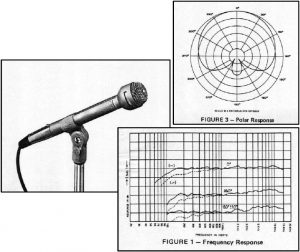 1958—Peggy Sue
1958—Peggy Sue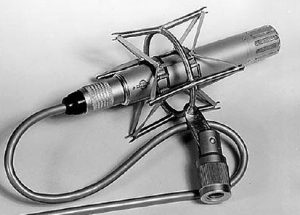 1960s—I Second That Emotion
1960s—I Second That Emotion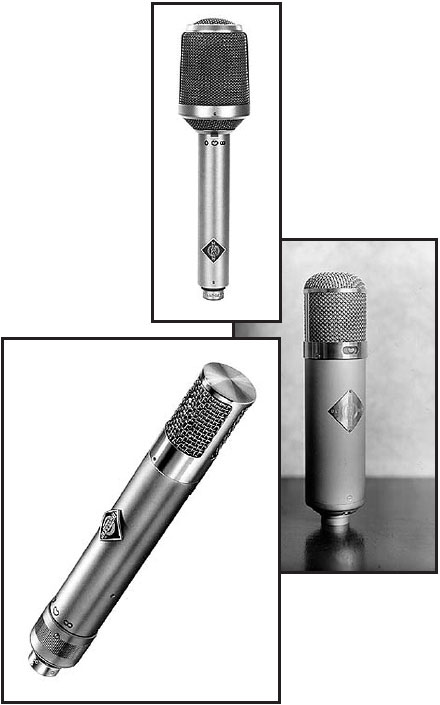 1969—Across the Great Divide
1969—Across the Great Divide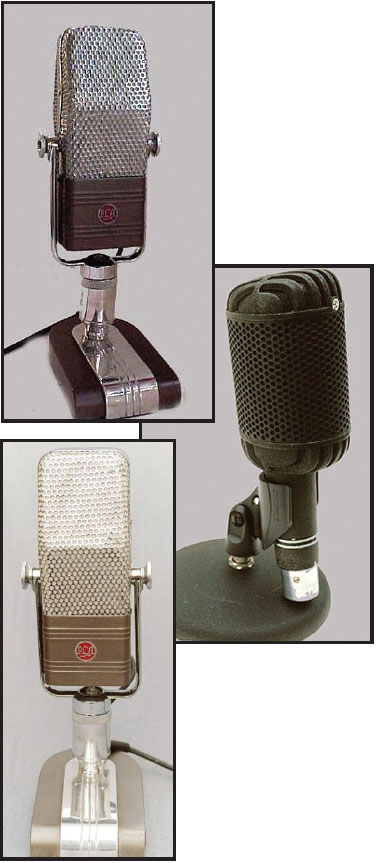 Aftershocks
Aftershocks